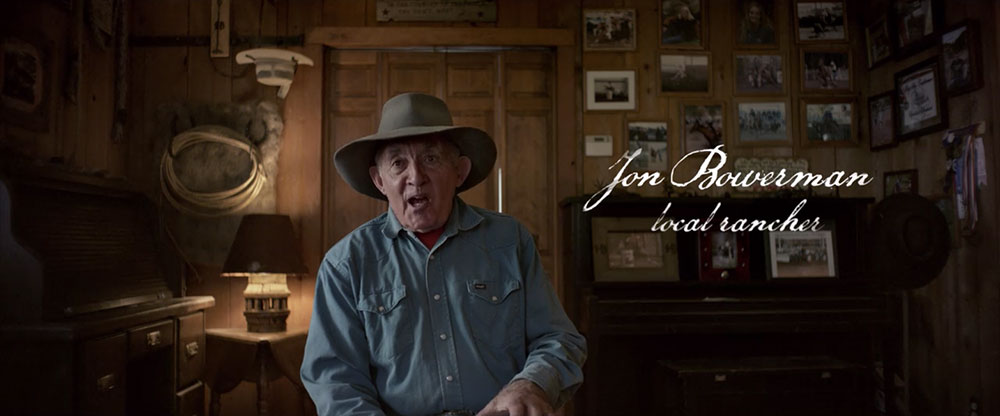I’ve been hearing a lot about the new Netflix documentary series Wild Wild Country, so tonight I decided to start watching it. It’s about a pretty remarkable story that happened in the 1980s, when an Indian guru (and/or cult leader) and his followers attempted to take over a tiny Oregon town to create a commune, but within a couple of years had been charged with committing a mass poisoning attack and an attempted assassination.
I’ve only watched the first hour-long episode, but I was so struck by the cinematography of the talking-heads sequences that I just had to post about them. Just look at these shots:
The subjects are all situated in their own homes, roughly centred in the frame, and at quite a distance from the camera. They’re practically engulfed by the photographs and books on the walls behind them, and you really get a sense of who these people are just from the environment they’re captured in.
I think it’s also notable that each person is framed with their head and body inside a doorway or window. I haven’t watched the whole series yet so I don’t quite know where it’s going, but I’d be surprised if this wasn’t subtextually significant. At the very least it makes for a visually striking shot.
The main character (of the first episode, at least) is Sheela, the guru/cult leader’s personal secretary and one of the people charged and found guilty of attempted murder for the poisoning attack. This is how her interview’s master shot is framed:
Firstly, she’s much closer to the camera than any of the other subjects, and it’s a much more intimate shot. Where the other talking heads are engulfed by their environment, Sheela completely stands out. Also, because the camera is so much closer to her the low angle is strongly accentuated; she completely dominates the frame and almost talks “over” the camera to the off-screen interviewer. It puts her in quite a powerful position, which contrasts strongly with her kindly old-lady demeanour and might hint towards her unreliability as a subject.
I found all of these choices quite interesting and informative. The project we’re working on at the moment, She Drives, is obviously much simpler in comparison, but it’s good to know that there’s such a wide spectrum of possibilities for future reference.




